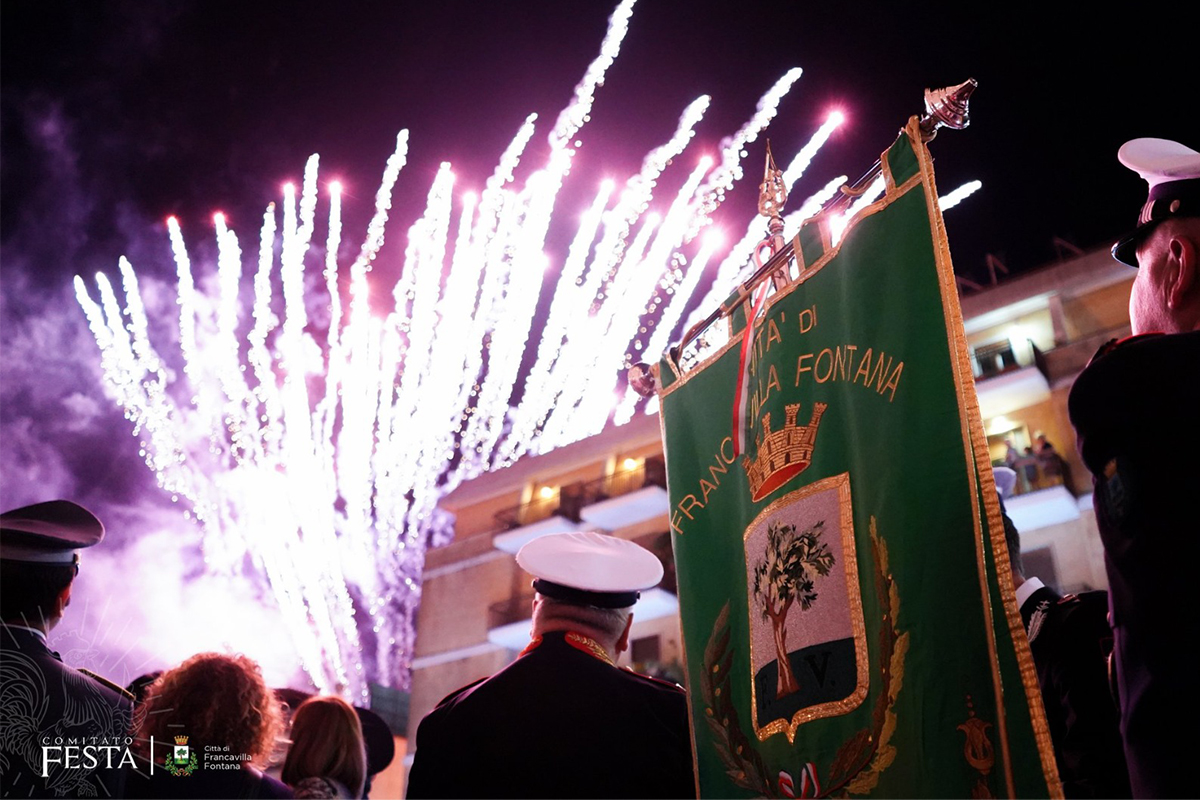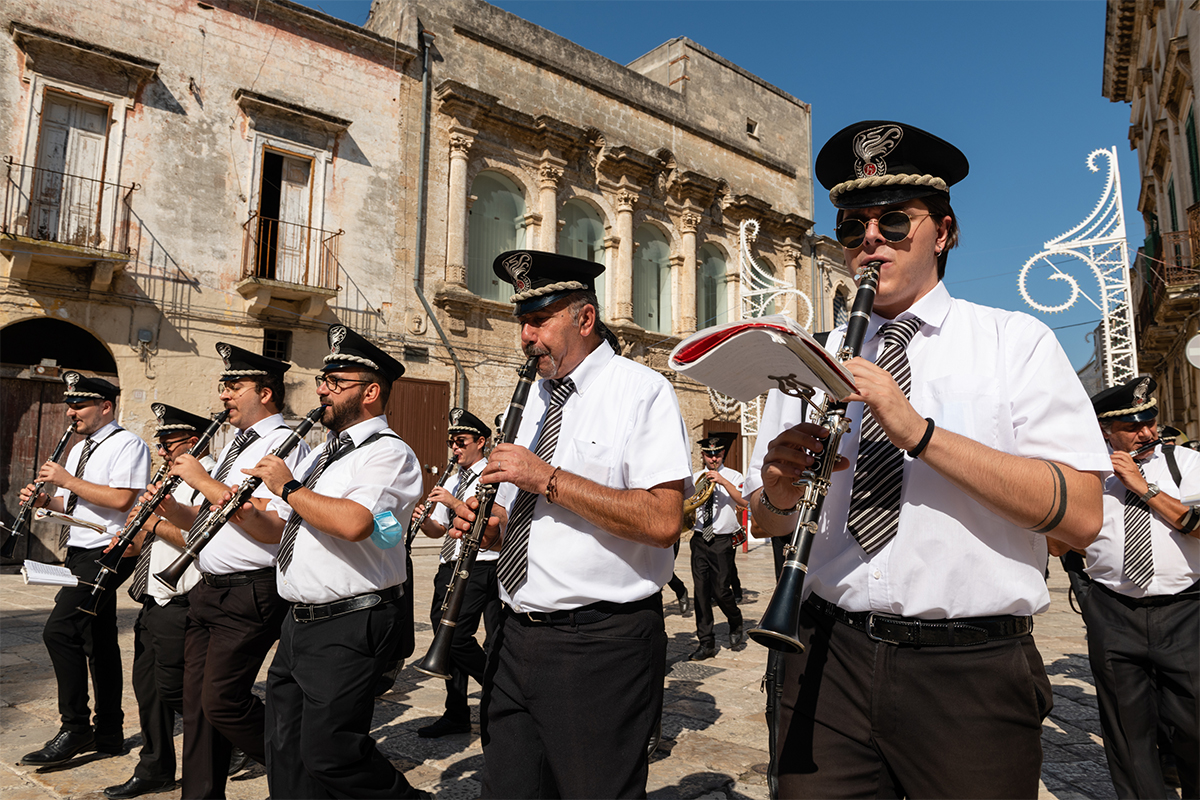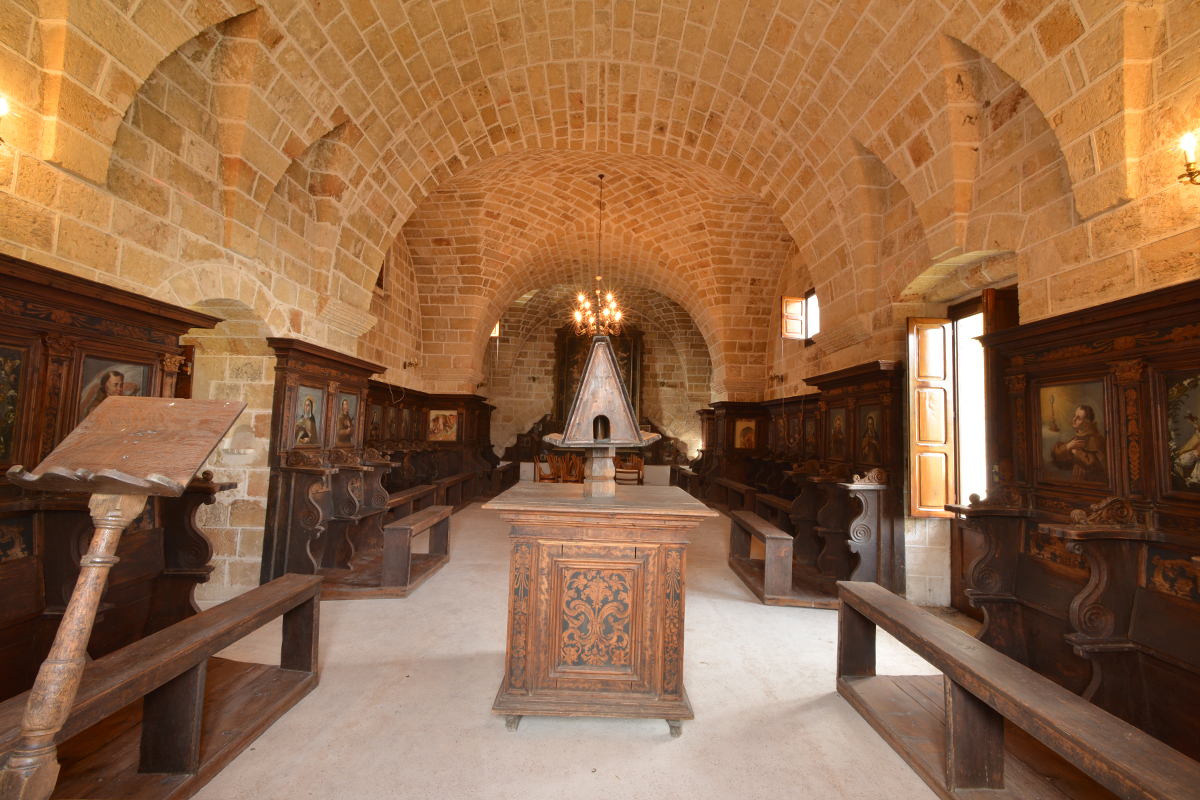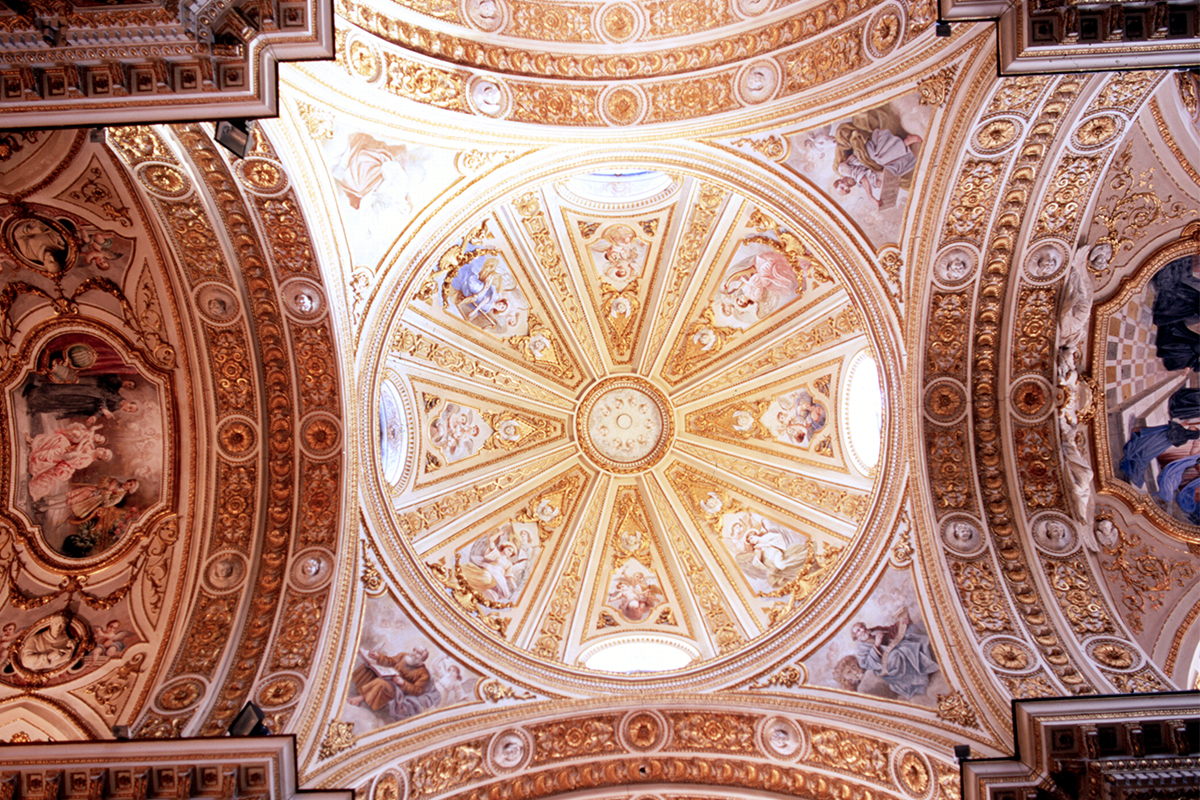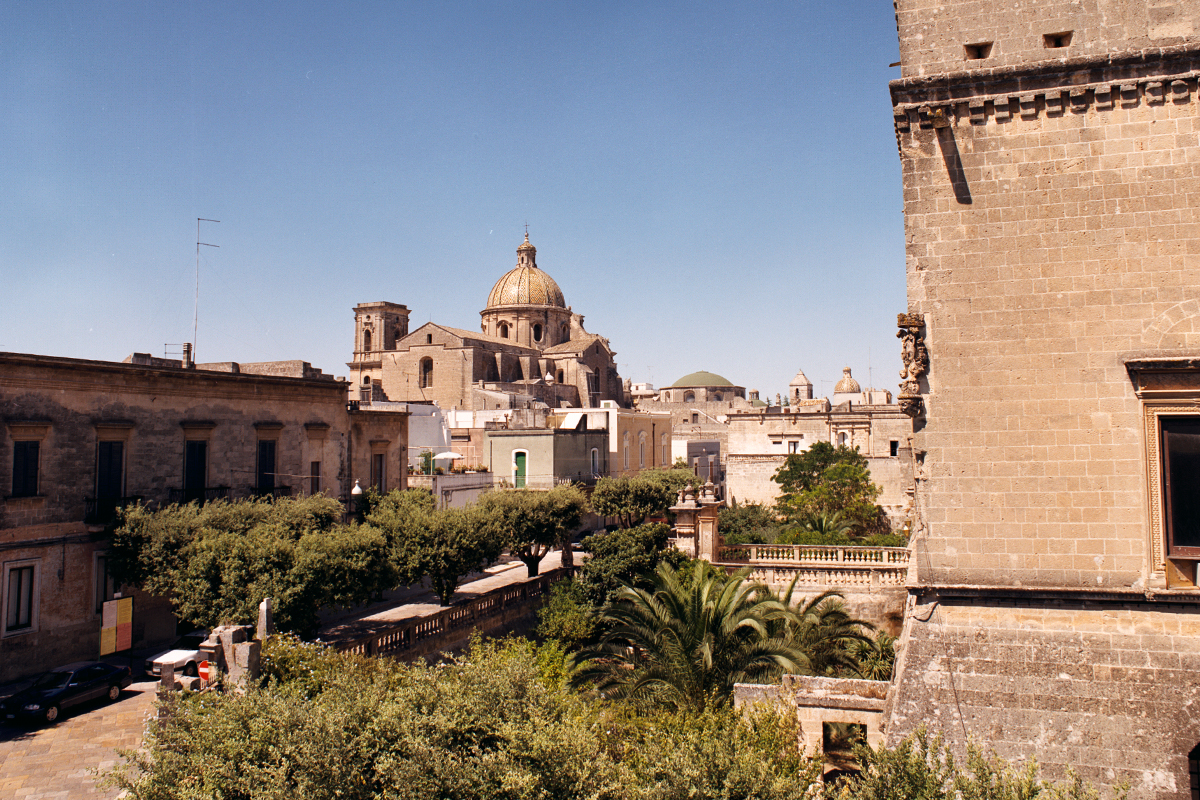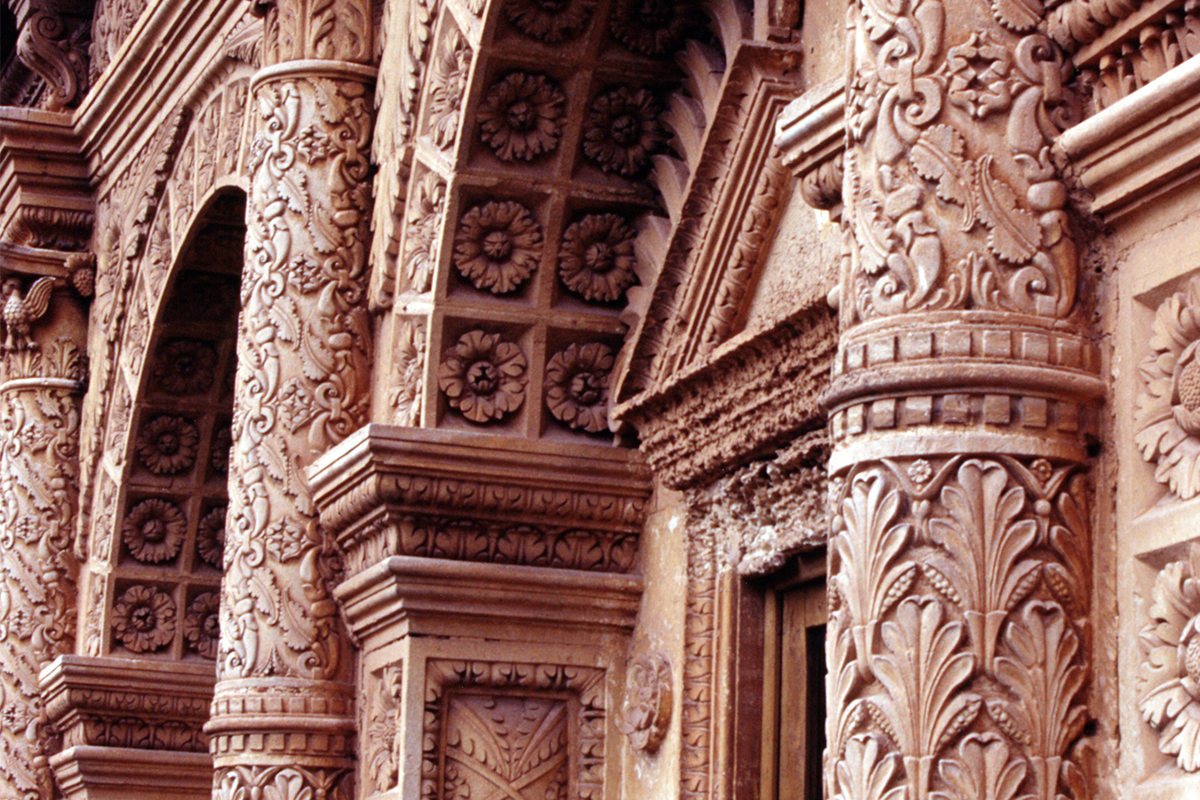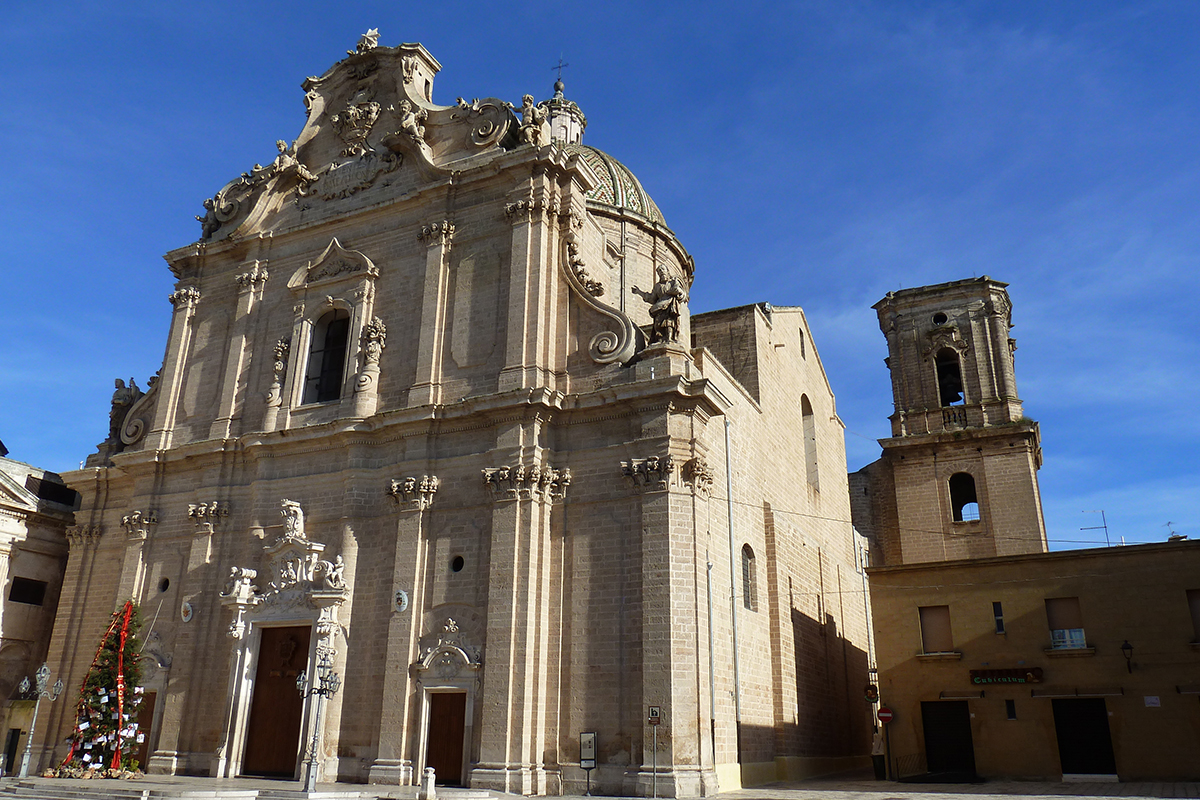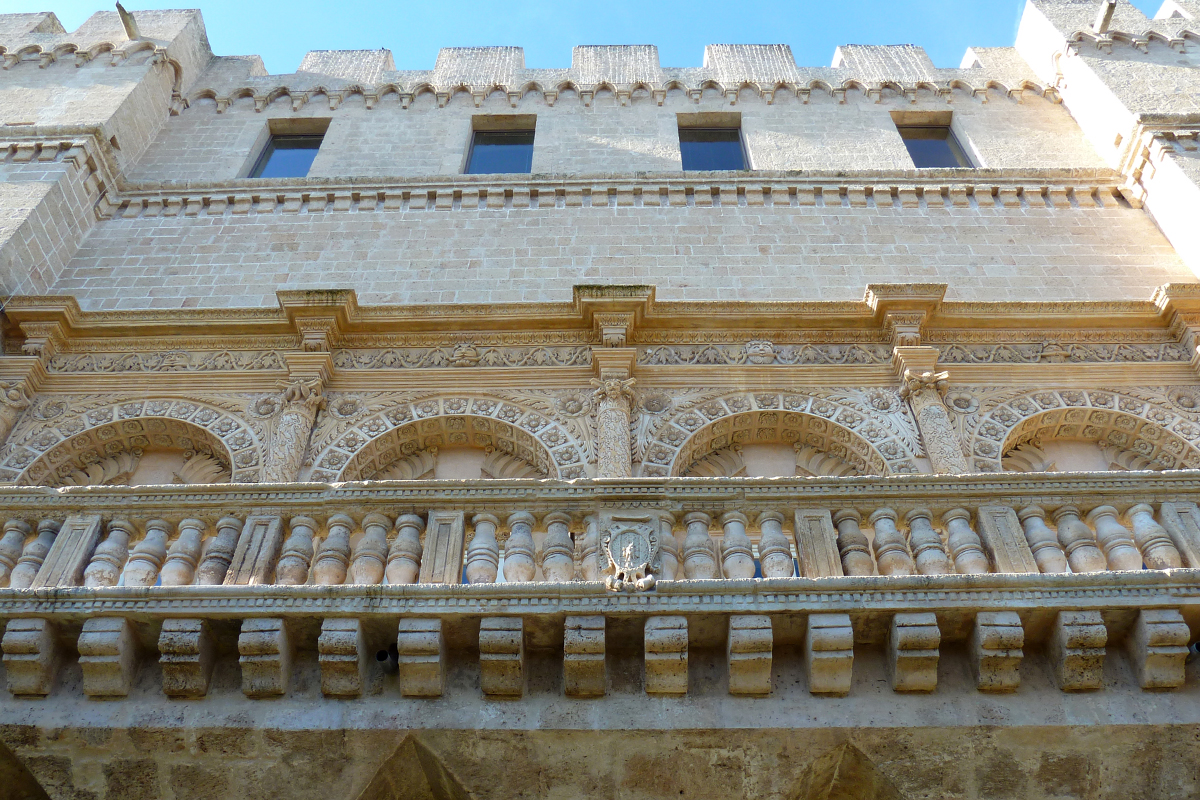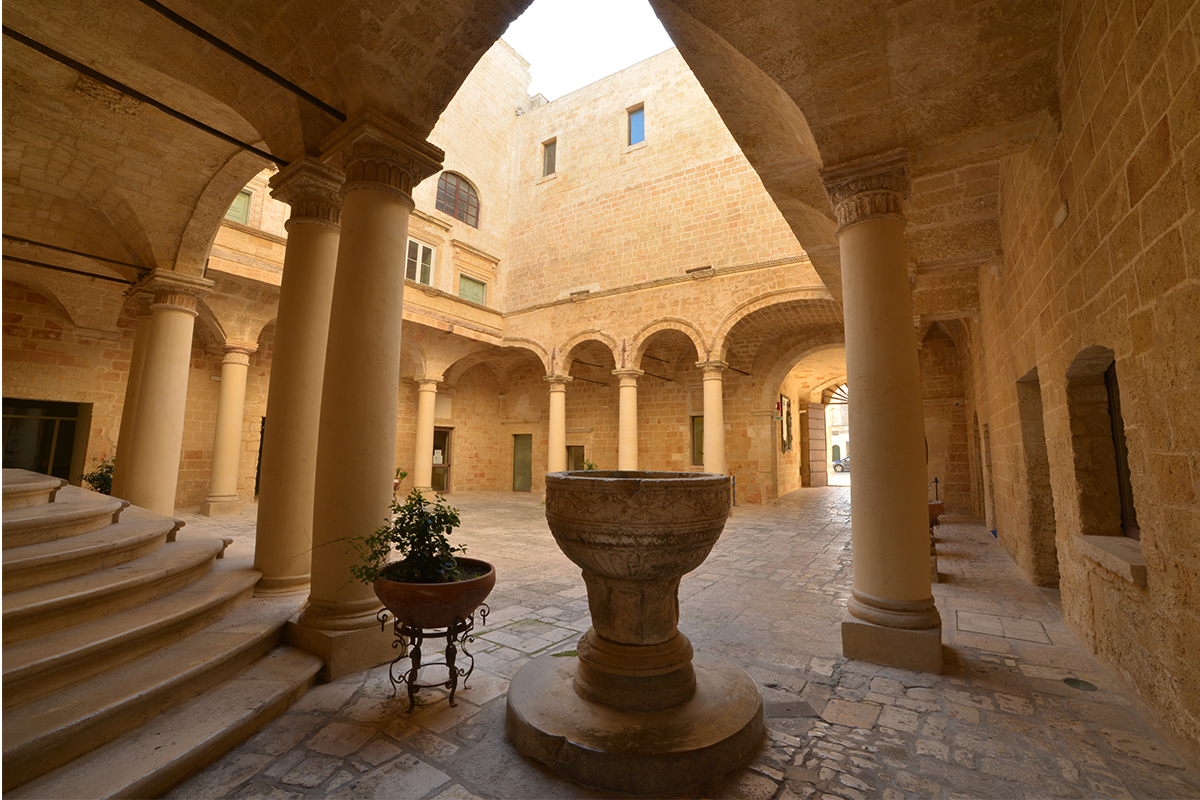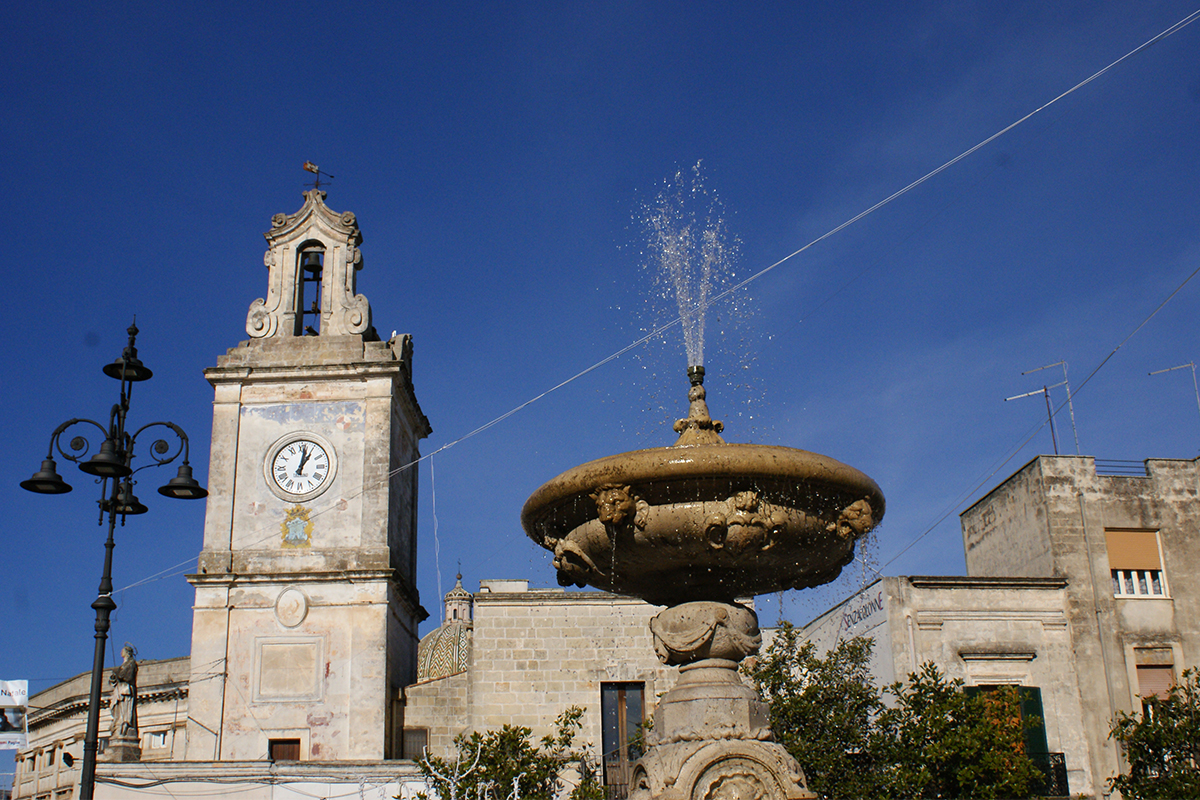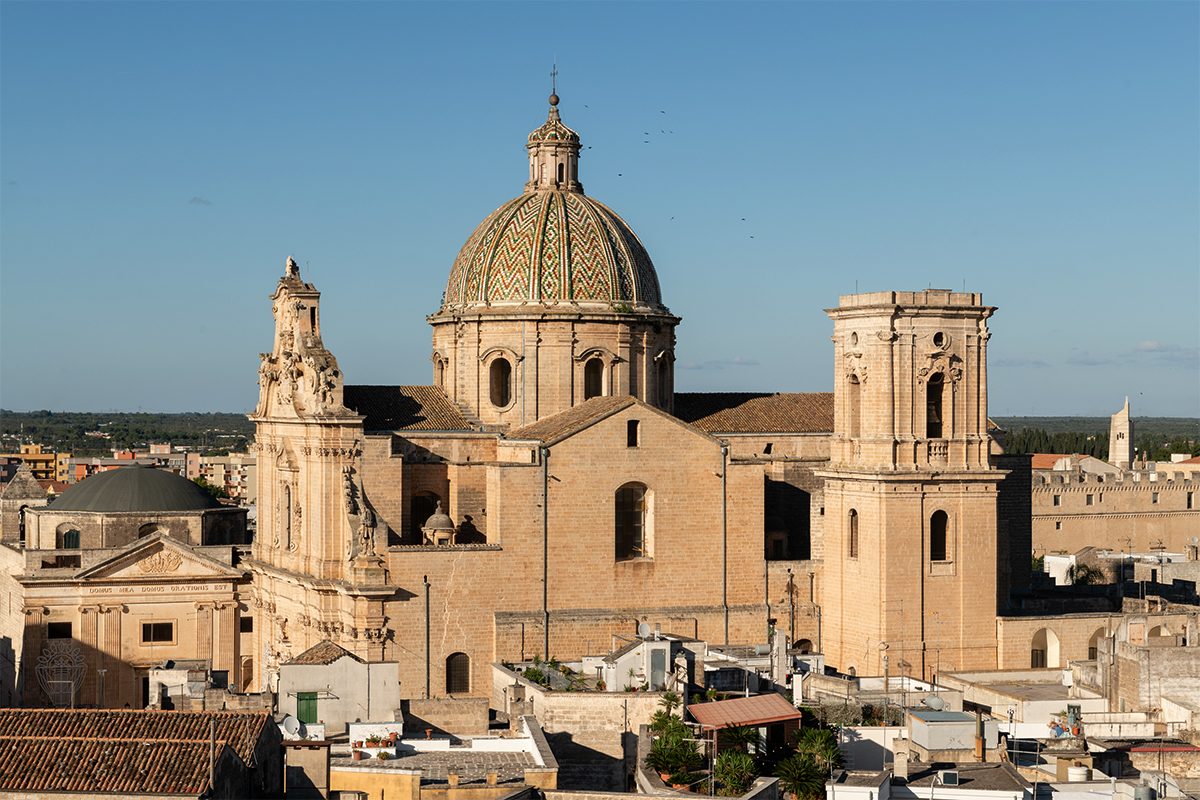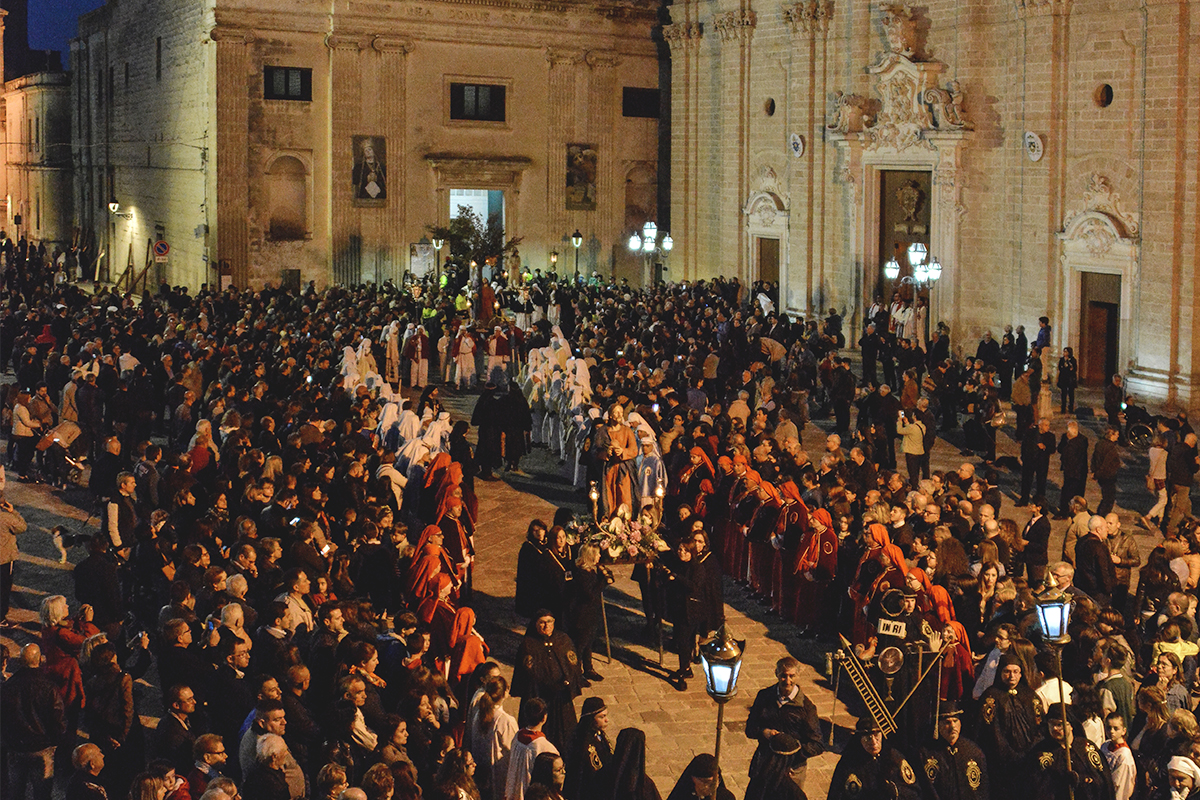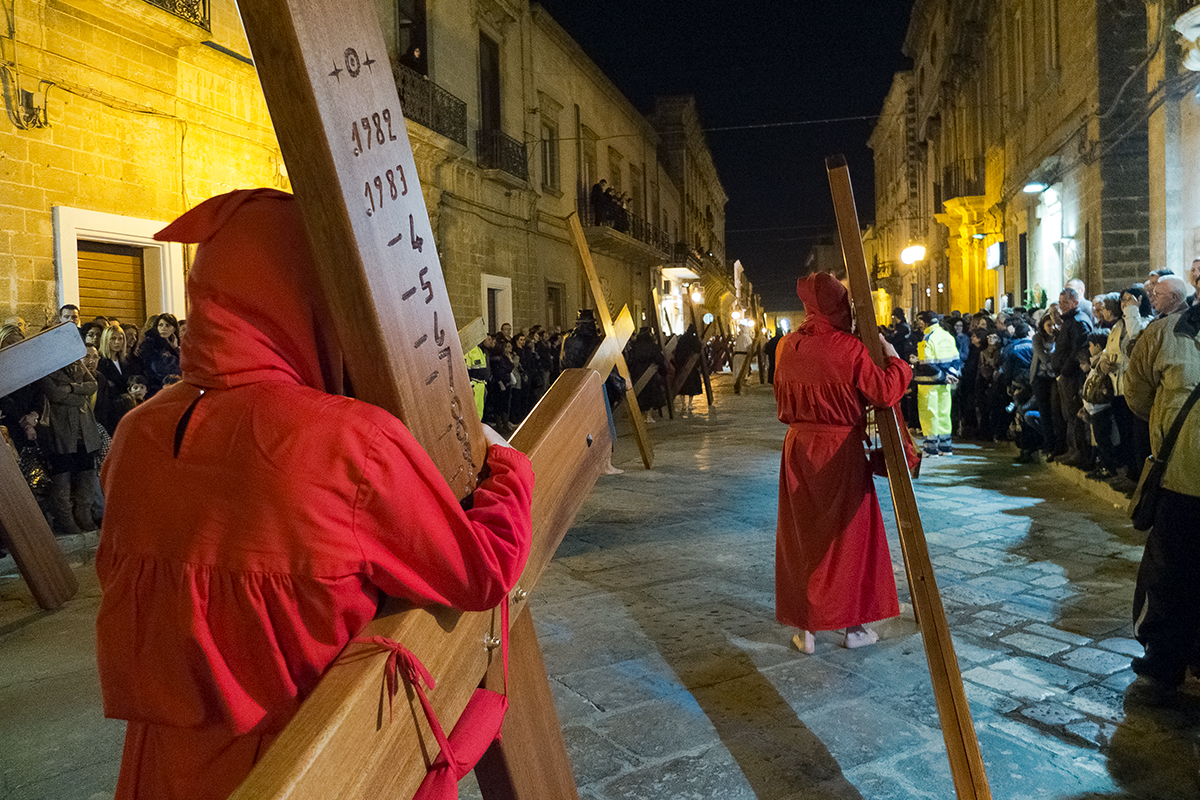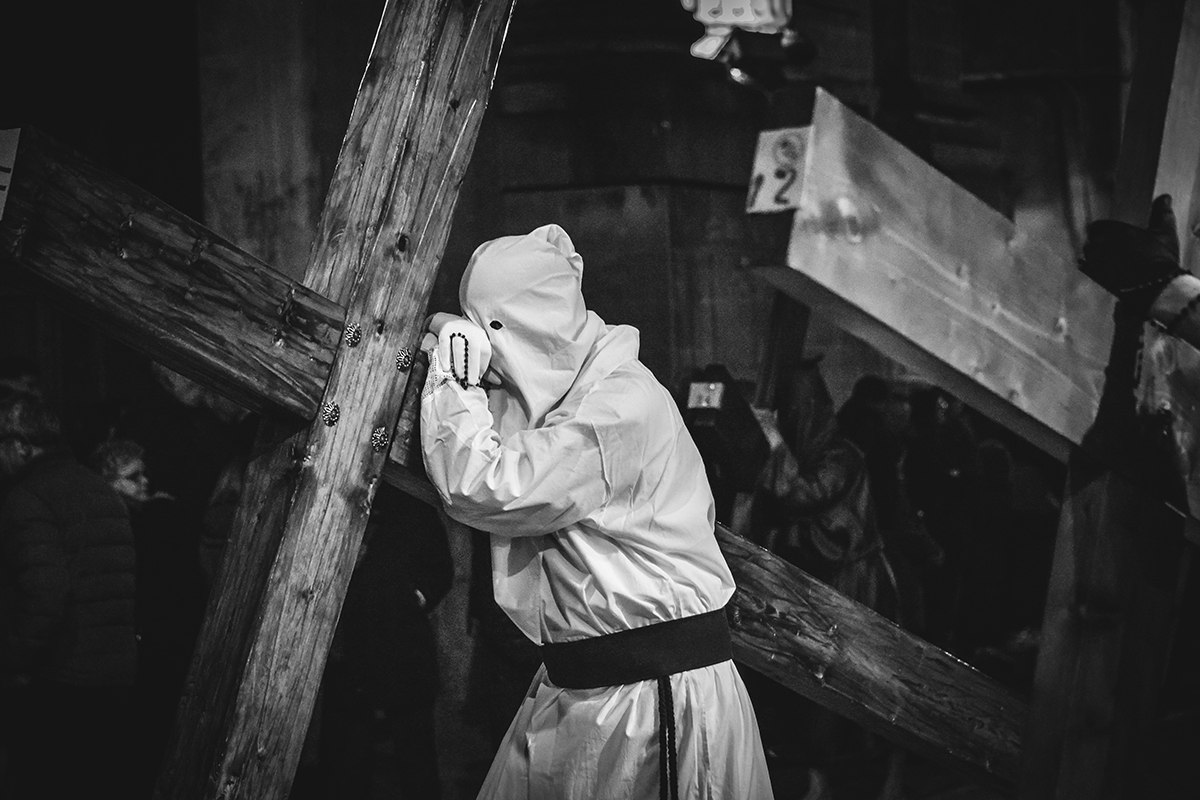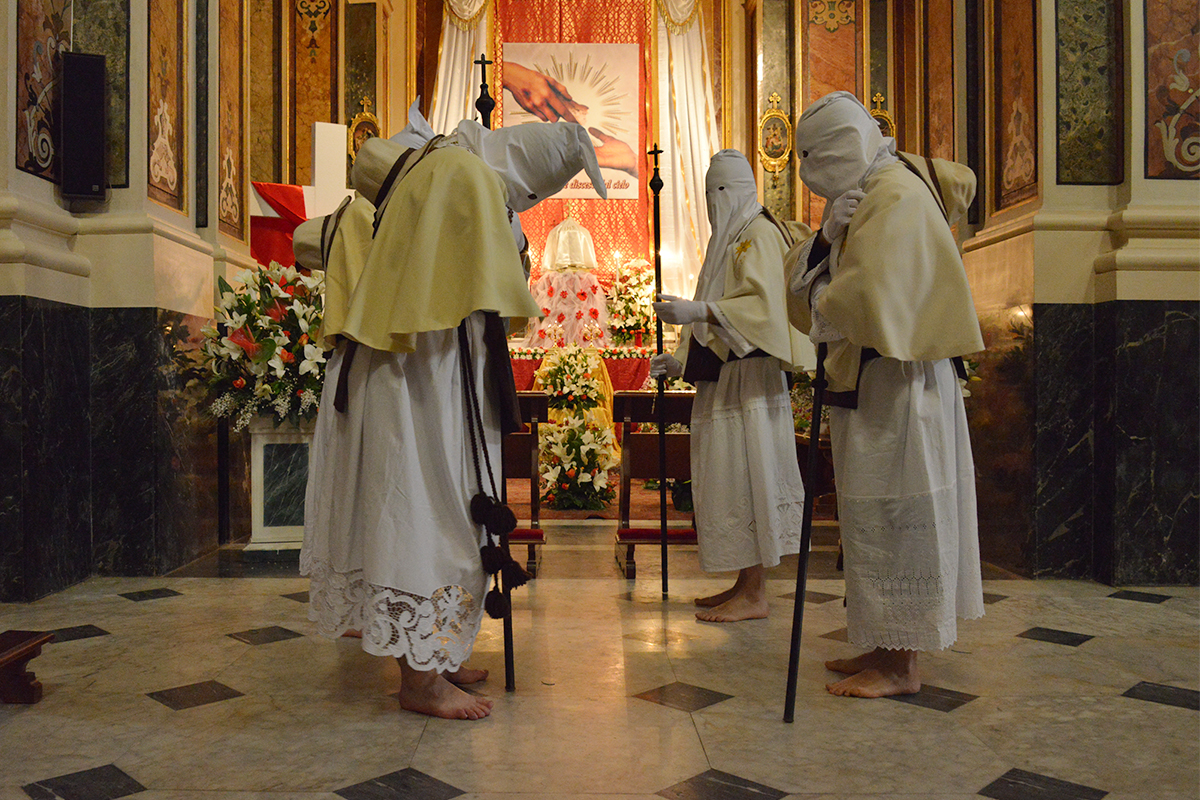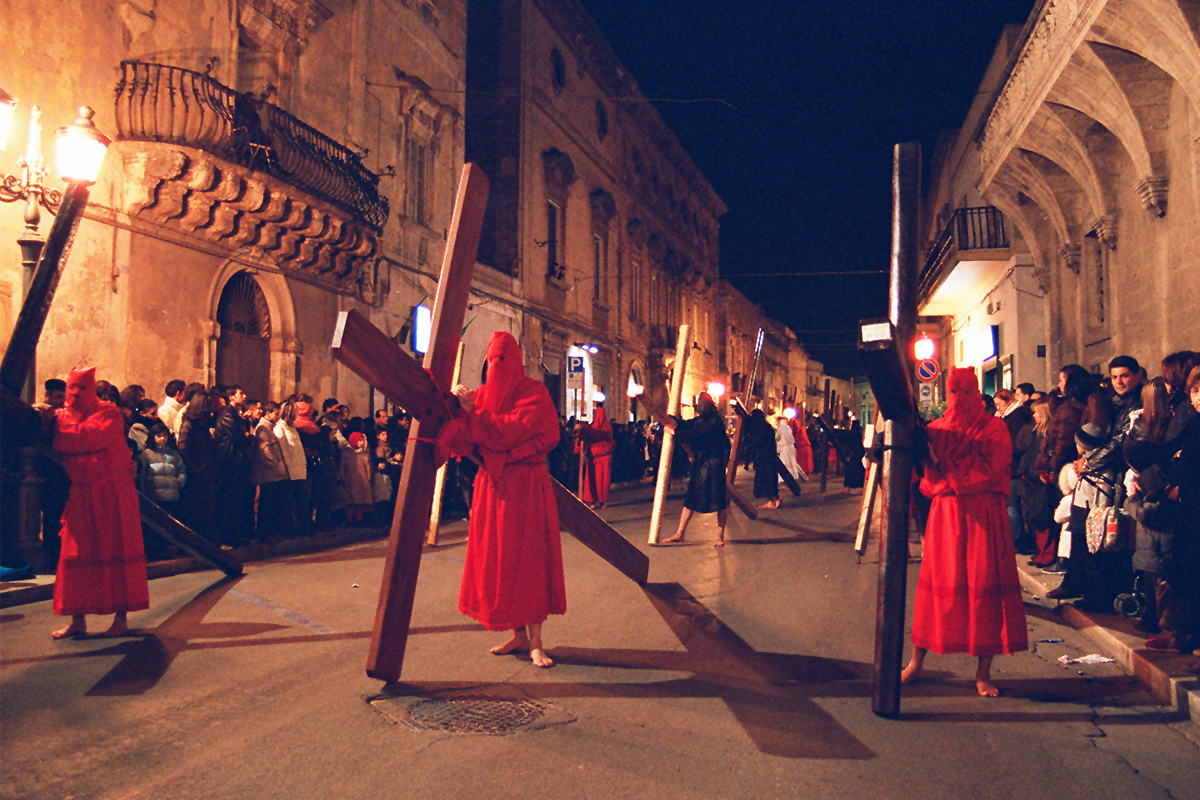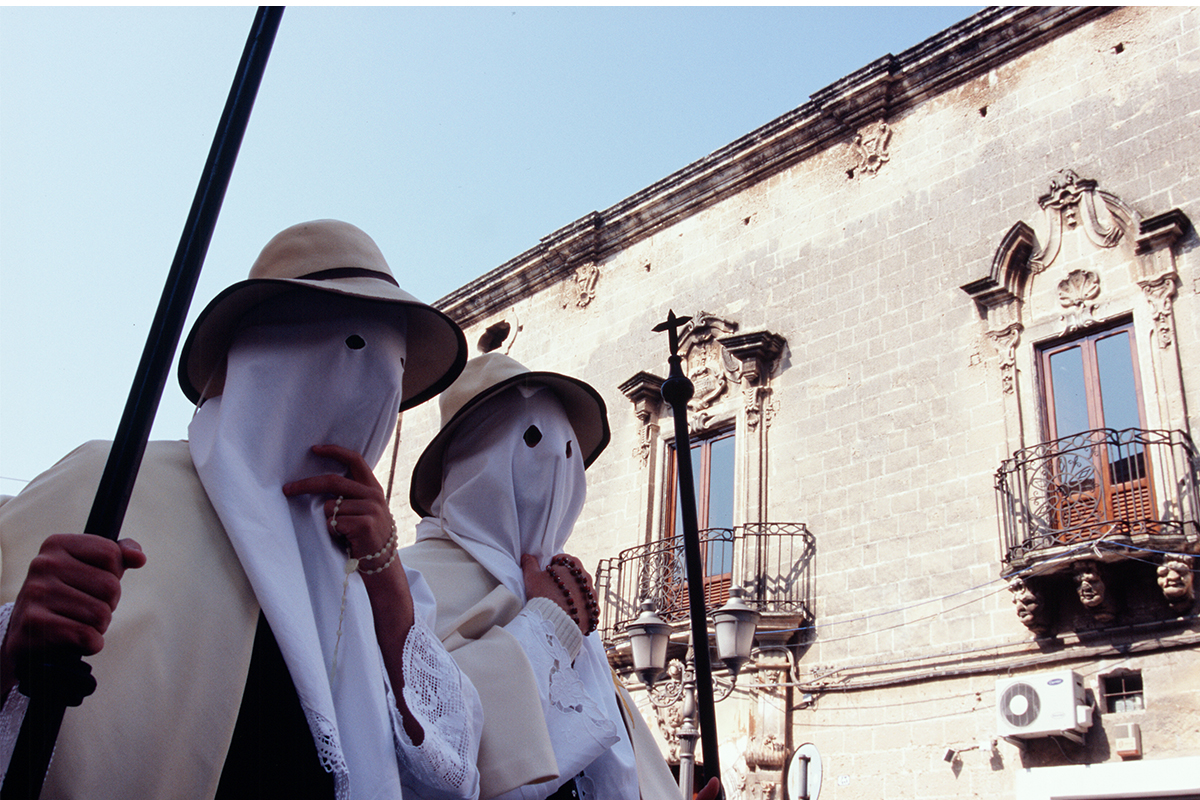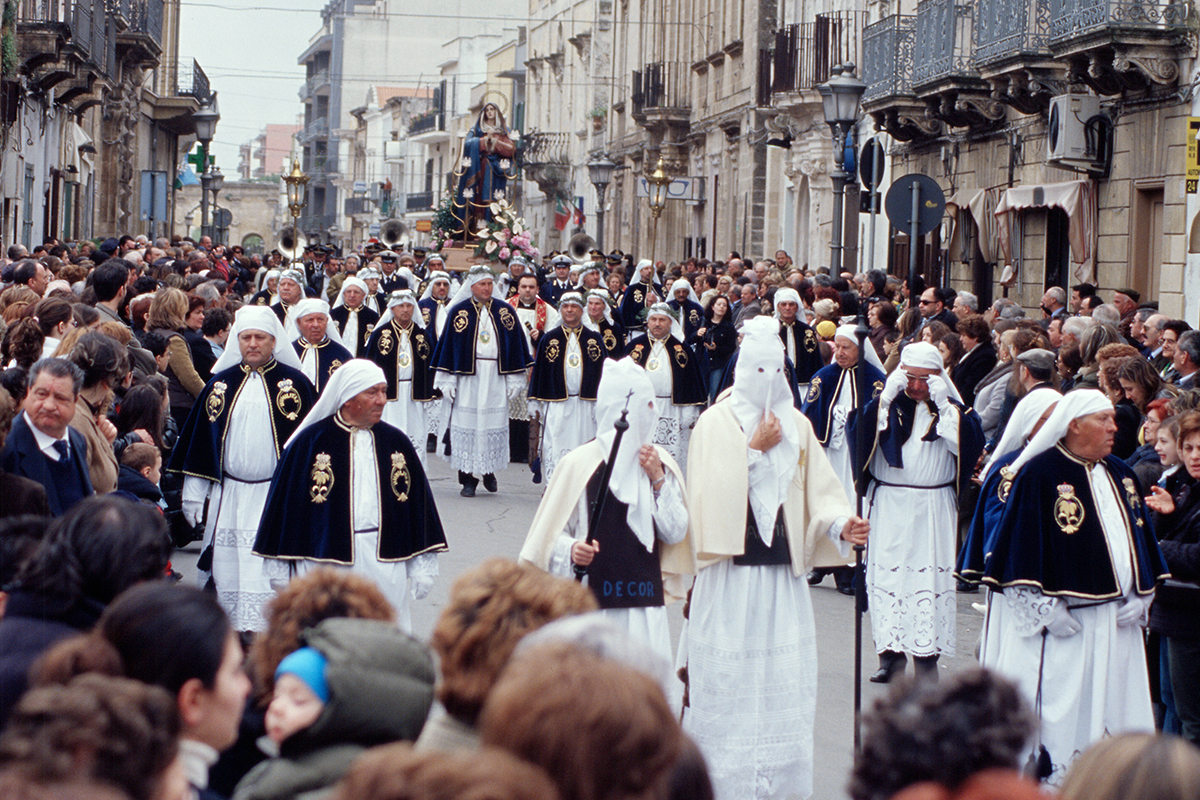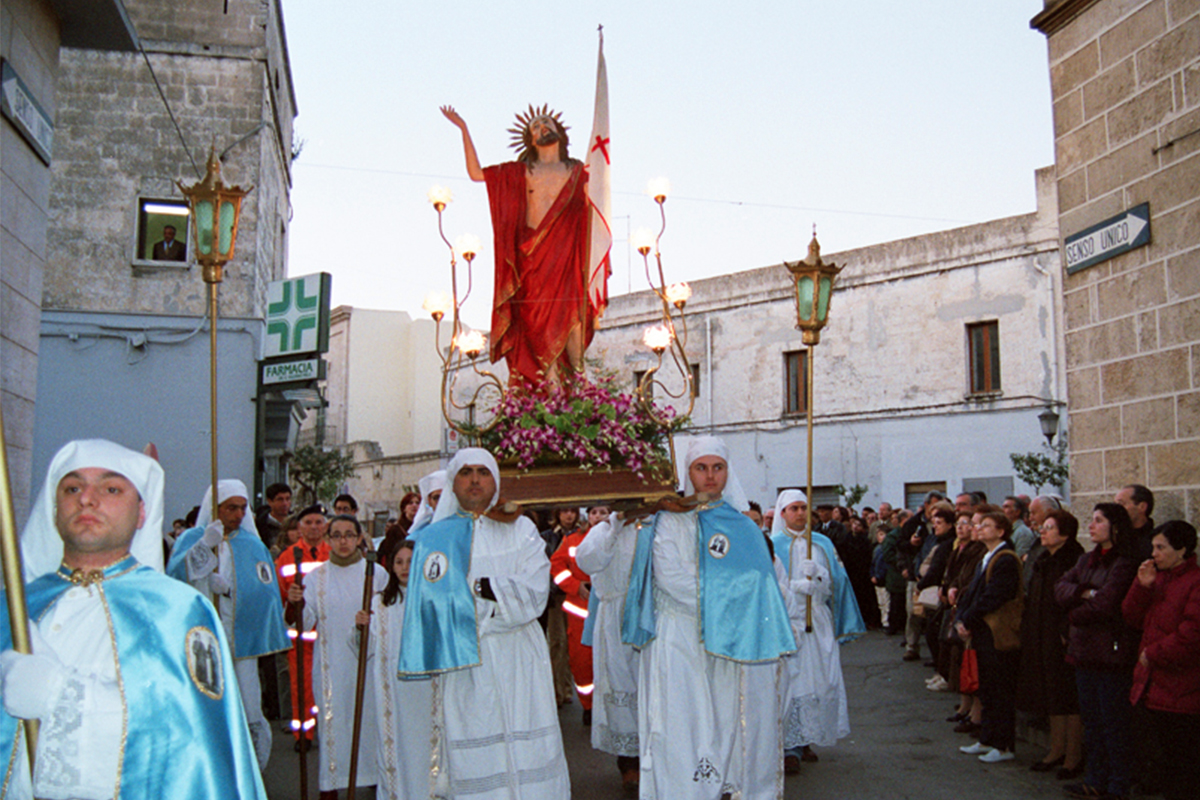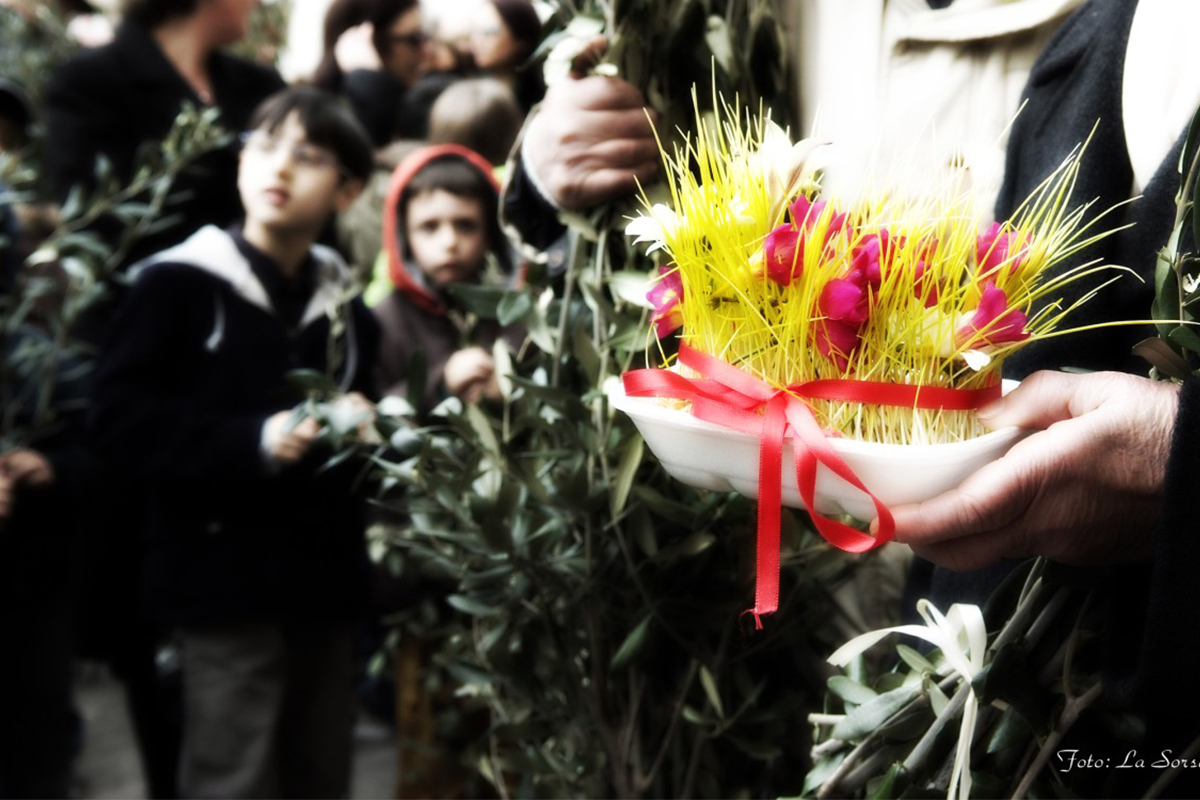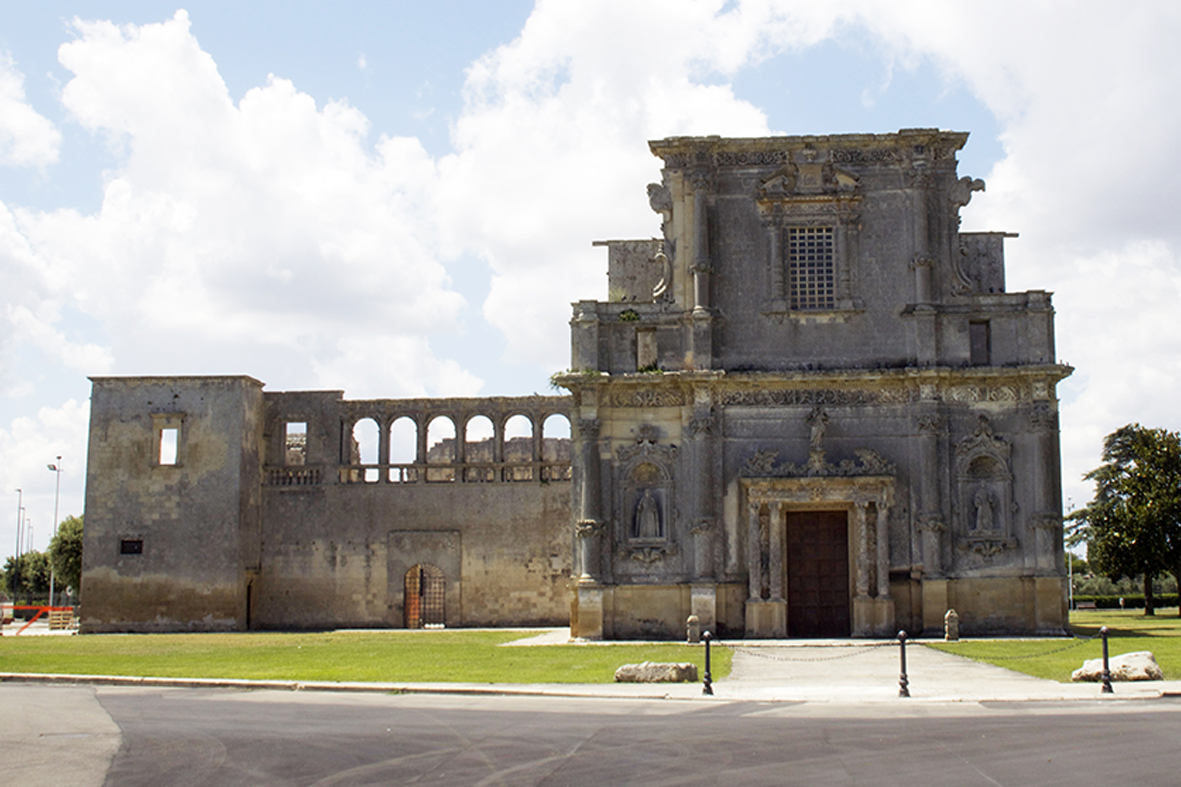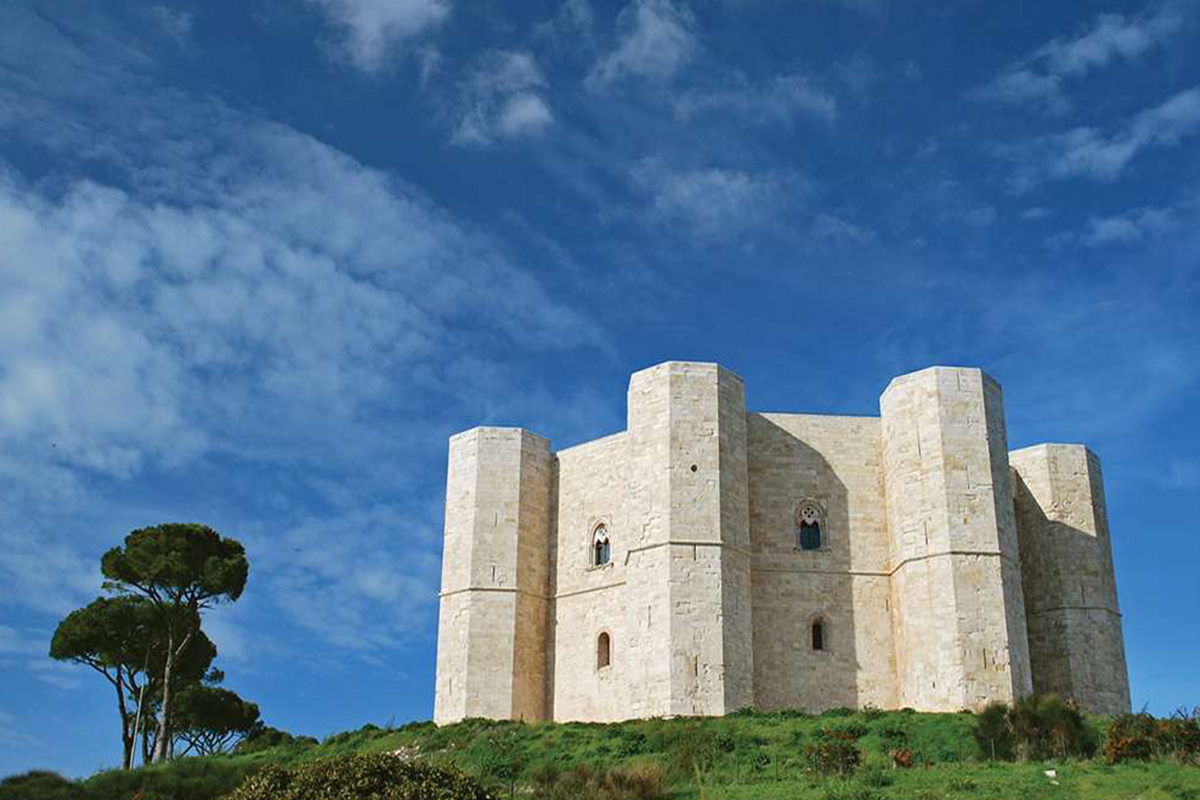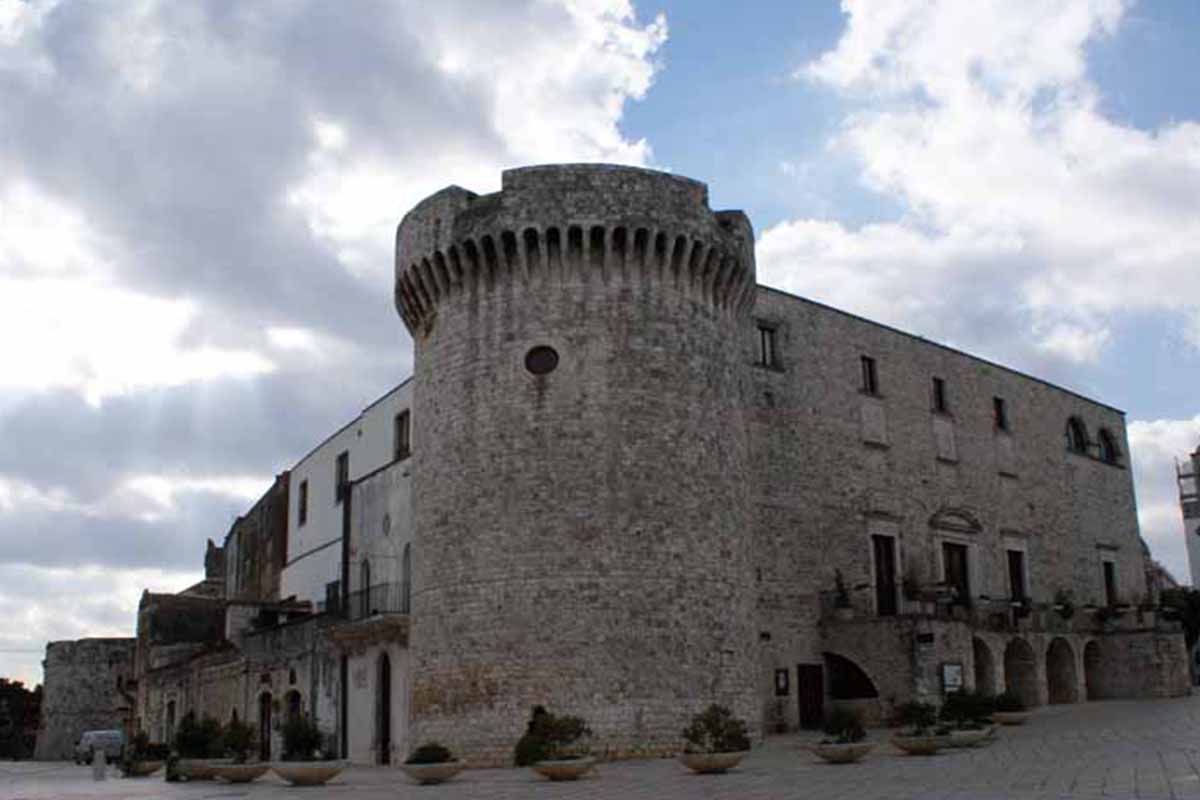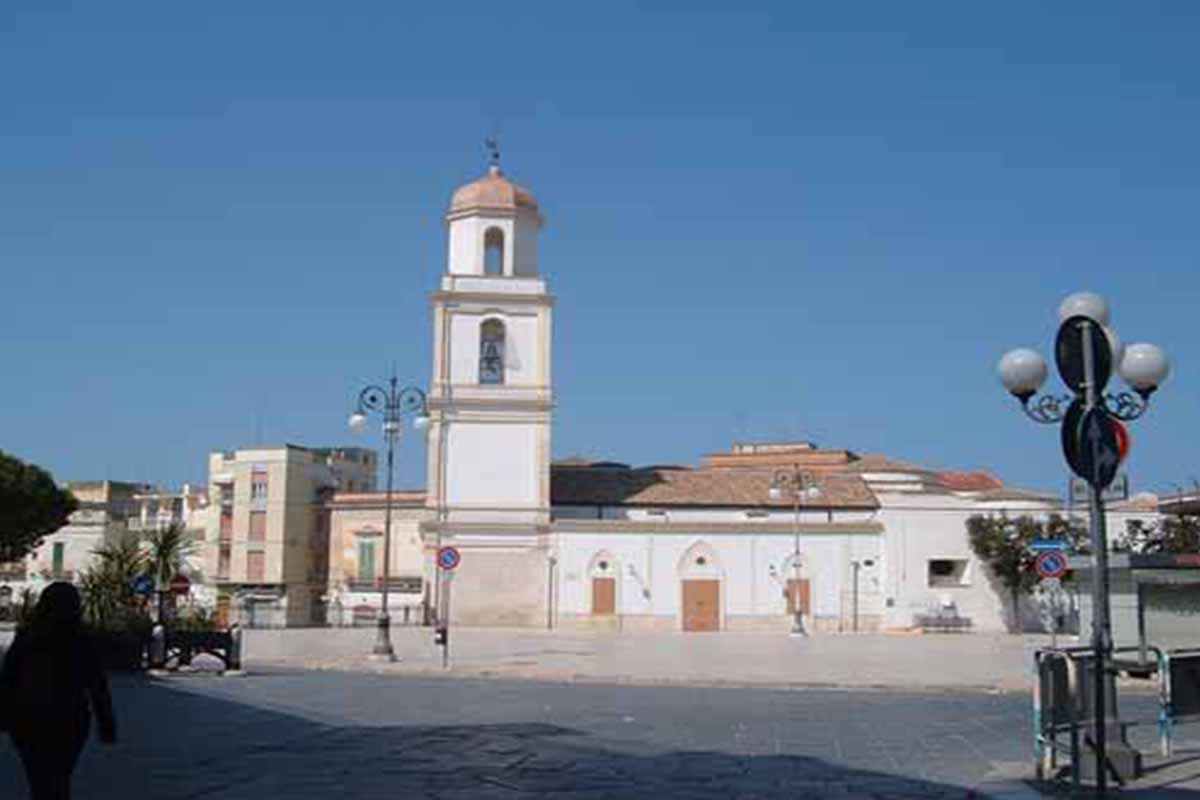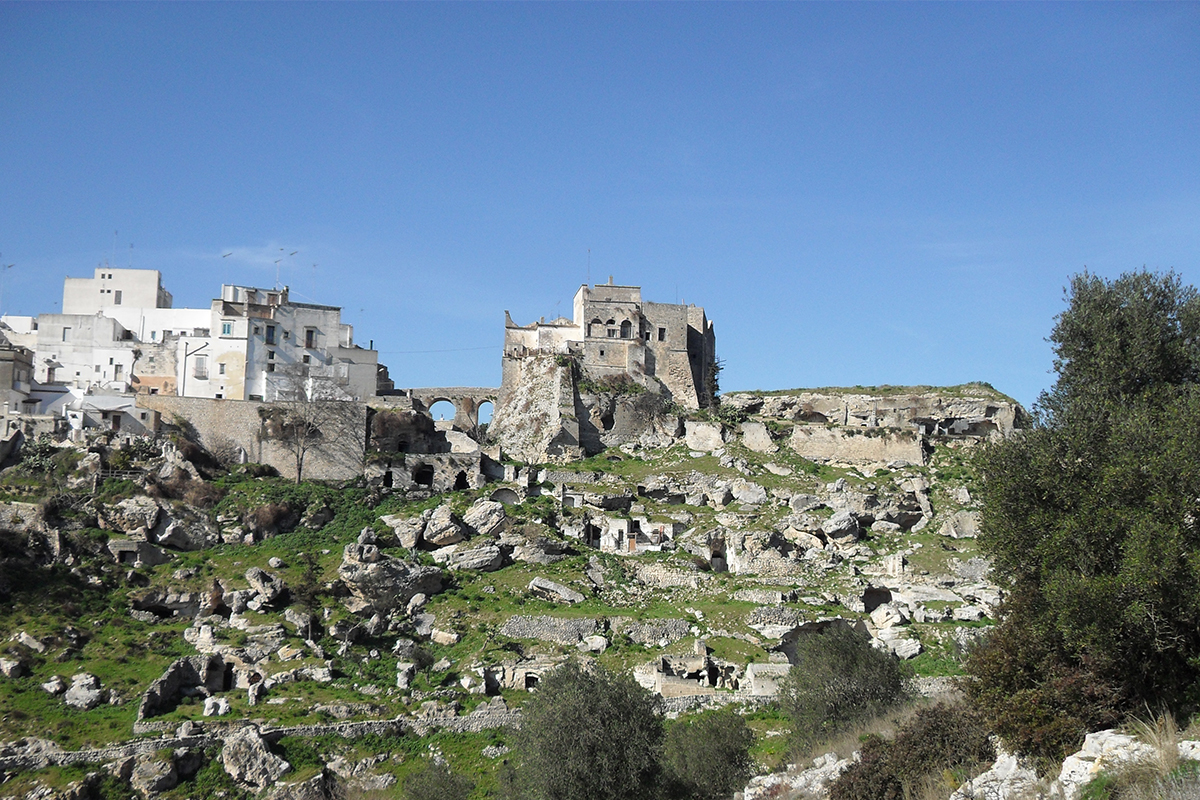Cities
the Pappamusci
10 Dicembre 2024
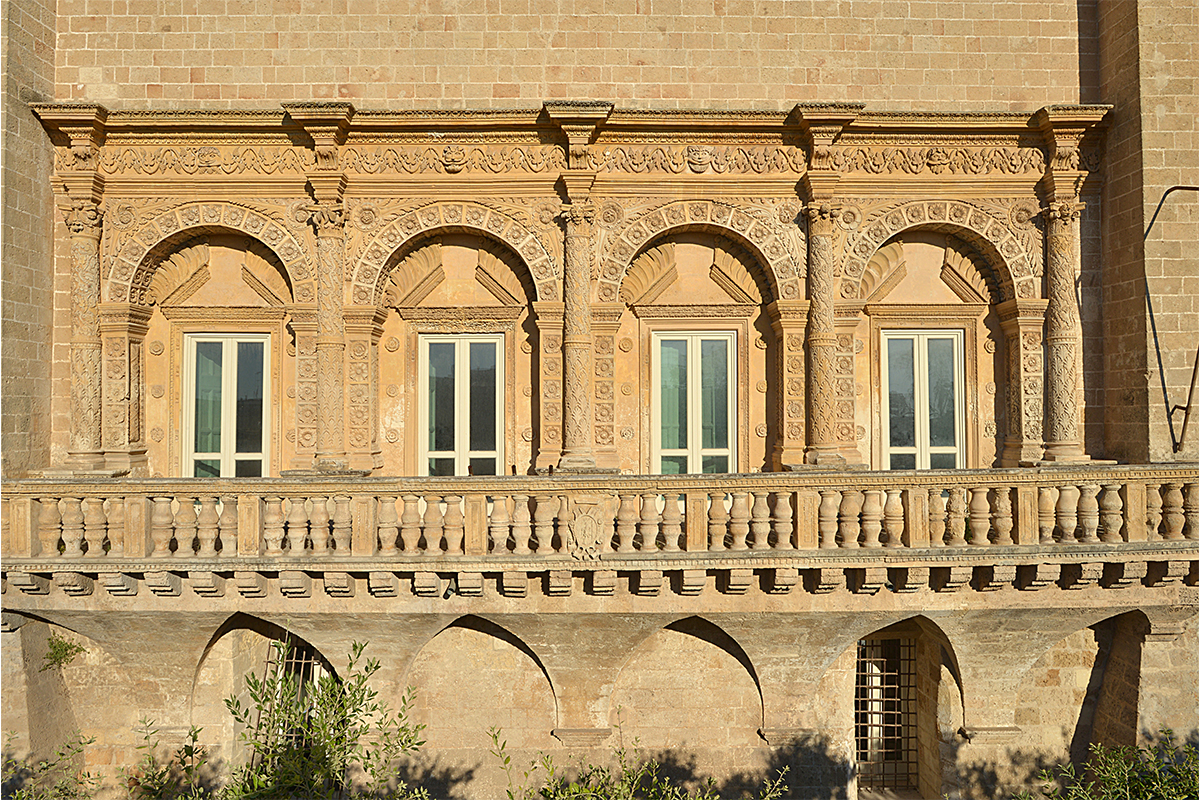
FRANCAVILLA FONTANA (br) stands at the centre of the Terra d'Otranto, emerging amidst expanses of olive trees, interspersed with more than seventy masserias, numerous trulli and dry-stone walls.
The origins of the city are lost in the meanders of history. Numerous testimonies attest to the presence of human settlements since the Neolithic, but the protagonists of the deepest past were the Messapi. One suggestion is that Francavilla rose on the ashes of the Roman Rudiae, home of the poet Quinto Ennio.
According to some scholars, the foundation of the town dates back to the year 866, when some soldiers following Emperor Ludovic II arrived here.
Popular tradition, on the other hand, dates the foundation to a miraculous event that took place on 14 September 1310: during a hunting trip by Prince Philip of Anjou, one of his men shot an arrow to hit a deer drinking at a spring, but the dart came back. An image of the Madonna and Child, the ‘Madonna of the Fountain’, was found on the spot, taken as the protector of the city, for which the prince had a church built.
Every year between 13 and 15 September, the communitycelebrates the Madonna della Fontana with impressive civil and religiousfestivities. Luminaries decorate the town's streets with lacework of light, bands take turns on the cassarmonica, and in the centre there is a riot of sweets and traditional games.
In 1575 Francavilla was bought by the Imperiali family, of Genoese origin, who ruled for eight generations until 1782.
The Imperiali Castle has witnessed the town's history since 1450. Here are the ancient frescoes in the chapel of Santa Maria delle Grazie, the beautiful Sala del Camino and many other treasures. Francavilla Fontana is a town rich in history, art and culture. Its 17th-century palazzi, Baroque churches, large city gates, alleys and small squares in the historic centre are elements that characterise the town. Here, amidst evocative palaces and loggias, you can breathe in the scent of ‘ricci “ sugared almonds made from toasted almonds and the tasty poor man's cake ”la copeta’.
In the oldest part of the old town centre, you can admire the Basilica Pontificia Minore Maria Santissima del Rosario, with the highest dome in Salento, the Church of Santa Chiara, which houses the Statues of the Mysteries, and the Church of the Liguorini Fathers, known as the Chiesa d'Oro. One of the most important moments in town life is the Rites of Holy Week.
Visiting Francavilla Fontana means immersing oneself in centuries of history and reliving the charm of rural culture .
Places to visit: Chiesa Matrice, Chiesa dei padri Liguorini, Chiesa di Santa Chiara, Chiesa di San Sebastiano, Chiesa del Carmine, Palazzo Argentina, Castello, Chiesa dell'Immacolata, Chiesa dello Spirito Santo, Palazzo Giannuzzi-Bottari-Carissimo.
Friday of Passion
Processione "Ad Tenebras" della Madonna Addolorata
The Friday of Passion, which precedes Palm Sunday, marks the beginning of the Holy Week rites in Francavilla Fontana. On this day, the Arciconfraternita dell’Orazione e Morte organizes the Processione "Ad Tenebras", an event of great spiritual intensity. The statue of the Madonna Addolorata, of Venetian craftsmanship and dating back to the 18th century, is crafted in wood on a pedestal and serves as the focal point of the procession.
-Date: April 11, 2025
-Time: 7:00 PM
-Location: Chiesa di Santa Chiara
Holy Thursday
Pilgrimage of the "Pappamusci" to the Sepulchers
On Holy Thursday, the heart of Holy Week begins. After the celebration of the Messa in Coena Domini, the confraternity members of the Chiesa del Carmine, known as Pappamusci, begin the traditional barefoot pilgrimage, visiting all the churches of Francavilla Fontana. This rite, passed down by the Carmelite Friars, symbolizes a journey through the places of Christ's Passion.
The Pappamusci, dressed in white robes and hooded, walk through the streets of the city praying before the Repositori, also called "Sepolcri". On the night of Holy Thursday, a group of confraternity members, accompanied by the "trenula" (an ancient instrument with a distinctive sound) and two musicians, sings a chant at the homes of the elderly, priors, and former priors, inviting them to the Good Friday procession.
-Date: April 17, 2025
-Time: 6:00 PM
-Location: Through the streets of the city
Good Friday
Processione della Desolata
On the morning of Good Friday, the pilgrimage of the Pappamusci continues with the Processione della Desolata, representing the Madonna Addolorata. The six local Confraternite take turns annually in groups of three, simultaneously parading through the streets of the city amidst two rows of onlookers.
-Date: April 18, 2025
-Time: 8:00 AM - 12:00 PM
-Location: Through the streets of the city
Good Friday
Processione dei Misteri
On the evening of Good Friday, the city gathers in silence for the Processione dei Misteri, an event involving all the local Confraternite. The procession departs from the Chiesa di Santa Chiara, featuring statues that represent the key moments of Christ's Passion:
1. Croce Nera dei Misteri
2. Cristo con il pane
3. Cristo all’Orto 4. Cristo vestito da pazzo
5. Cristo alla Colonna
6. Cristo alla Canna
7. Cristo caduto sotto la Croce
8. Cristo in Croce
9. Sacra Sindone
10. Cristo Morto
11. Madonna Addolorata
The procession is accompanied by the sound of the "trenule" and moving funeral marches performed by the band. The penitents, known as "li pappamusci cu li trai", walk barefoot, dragging heavy wooden crosses as an act of penance and devotion. The square in front of the Chiesa Matrice fills with faithful awaiting the procession, creating an atmosphere of reflection and faith.
-Date: April 18, 2025
-Time: 7:00 PM
-Location: Through the streets of the city
Easter Sunday
Processione del Cristo Risorto
On Easter Sunday, the Confraternita dell’Immacolata concludes the Easter rites with the solemn Processione del Cristo Risorto. This event celebrates the triumph of the Resurrection and takes place in an atmosphere of joy and hope.
-Date: April 20, 2025
-Time: 6:00 PM
-Location: Chiesa Immacolata
Friday of Passion / April 11, 2025
• FRANCAVILLA FONTANA / Processione dell'Addolorata / Church of Santa Chiara / 7:00 PM
Palm Sunday / April 13, 2025
• FRANCAVILLA FONTANA / Processione della Croce / Through the streets of the city / 9:00 AM
Holy Thursday / April 17, 2025
• FRANCAVILLA FONTANA / Tradizionale pellegrinaggio dei "Pappamusci" / Through the streets of the city / 6:00 PM
Good Friday / April 18, 2025
• FRANCAVILLA FONTANA / Processione "Ad Tenebras" / Through the streets of the city / 7:00 PM
Easter Sunday / April 20, 2025
• FRANCAVILLA FONTANA / Processione di Cristo Risorto / Church of the Immacolata / 6:00 PM
CONFRATERNITA DI S. ELIGIO (SOTTO IL TITOLO DI M. SS. ANNUNZIATA)
The institution of confraternities originated in the Middle Ages, a time when they held great religious and social significance. They were established through a formal decree issued by the local bishop. Regarding the Confraternita di S. Eligio, we know its rules were approved by Mons. Raffaele Palma in 1660, although its origins are even older, as it certainly existed in 1629. It was founded not only to cooperate and collaborate with the ecclesiastical hierarchy in spreading the Kingdom of God but also for the sanctification of its members. Without this, the very institutional purposes that ensured its recognition and approval by the Church could be compromised. During ceremonies and processions, the confreres wear the traditional habit, consisting of a white tunic, a blue cincture, and a blue mozzetta featuring two emblems: a lily on one side and the inscription “Humilitas” on the other. Currently, in addition to collaborating with the parish, the confraternity engages in spiritual and charitable formation activities and organizes religious functions such as the Quarantore, the rites of Holy Week, the feast of its patron saints, S. Eligio and Maria SS. Annunziata, as well as the religious and civic celebration in honor of S. Lucia.
REALE ARCICONFRATERNITA DELL’ORAZIONE E MORTE
The confraternity dates back to the earliest days of civilization in Francavilla Fontana, established to provide Christian burial for the deceased and assistance to those in need. Members wore a black sackcloth and a hood covering their faces; they worked hard and wrote little. The first official written document found in the archives dates back to February 12, 1620, when Abbot Marco Antonio Forleo requested and obtained affiliation with the mother house of the Orazione e Morte in Rome. This date was later recognized as the official foundation year in the 1976 census conducted by the Curia di Oria to determine the origins of various confraternities. The royal recognition was granted by King Ferdinand IV of Naples on April 29, 1769. However, the title of Arciconfraternita had already been conferred by religious authorities before the royal decree. Due to the strong devotion to the Vergine del Pianto—an ancient term previously used to refer to the Madonna Addolorata—a request was made for affiliation with the mother house of the Addolorata in Rome. As a result, the confraternity's official title became "Reale Arciconfraternita dell’Orazione e Morte sotto il titolo dell’Addolorata". The confraternity is headquartered in the Chiesa di Santa Chiara, a place of worship formerly part of the ancient cloistered monastery of the Clarisse. The church was granted to the confraternity in 1947 following the demolition of the old Chiesa della Morte, which once stood in what is now Piazza Giovanni XXIII. Today, the confraternity has 200 registered members and also includes a female association of 200 consorelle who serve under the title of the Addolorata.
ARCICONFRATERNITA SAN BERNARDINO DA SIENA
Among the oldest confraternities established in the city of Francavilla Fontana (BR), which belongs to the Diocese of Oria, is the Arciconfraternita di San Bernardino da Siena. Documented sources trace the presence of the Arciconfraternita di San Bernardino da Siena in the city back to April 29, 1568, in the ancient church of the Franciscans, now under the Padri Liguorini or Redemptorists. In 1759, the Arciconfraternita established its headquarters at the church of the Cappuccini Vecchi (now Parrocchia dello Spirito Santo). During World War II, as recounted orally by the late Prior Oronzo Barbaro, the confraternity was temporarily hosted at the Chiesa di San Biagio, which has now been reopened for worship. In 1947, it was decided to transfer the headquarters to the Chiesa dello Spirito Santo after it had been used as a military facility during the war. The ecclesiastical attire of the Arciconfraternita consists of a white tunic with intricate embroidery at the lower part, a cordone (cilice) tied with two green tassels that secure the tunic at the waist. Additionally, the ensemble includes a white hood in the shape of an inverted cone, a green mozzetta, and matching green gloves. To this day, the Arciconfraternita maintains its headquarters at the Parrocchia dello Spirito Santo.
CONFRATERNITA DEL SS. SACRAMENTO
The Confratelli del Santissimo Sacramento of Francavilla, up until 1553, always fulfilled their duties as parish assistants, carrying the title in the chapel founded by Pagano Trasente, where they gathered. In 1554, they were canonically recognized with the title of Confratelli del Santissimo Corpo di Cristo, affiliated with the mother house in Rome, and committed to defending Catholicism as a key front during the turbulent period of the Reformation. As clergy dependents, they owned property and had autonomous administration. They played a crucial role in the social and cultural development of the community by participating in the establishment of charitable institutions and schools. They enjoyed special papal privileges and contributed financially to the reconstruction of the Chiesa Matrice after the earthquake of 1743. In 1777, they obtained approval of their statutes from King Ferdinand IV of Bourbon. During the French Decade (1806-1815), they remained active, as they did in the years of the Bourbon Restoration (1816-1860). Following the implementation of various laws enacted by the unified Italian state in 1862, 1863, 1867, and 1890, they were stripped of their properties. Nevertheless, with renewed commitment, they continued—and still continue—their charitable and liturgical assistance activities under the leadership of priors, governors, and parish priests of the Chiesa Matrice, dedicated to Maria SS. del Santo Rosario, where their headquarters are located. They wear a white tunic with a red mozzetta and cincture. In 1954, they celebrated the fourth centenary of their canonical recognition, and in 2004, their 450th anniversary. They maintain both a historical and a current archive in good order. In 2004, when the second edition of their history was republished—rewritten and updated from the 1954 edition—the confraternity had 227 active members.
CONFRATERNITA MARIA SANTISSIMA DEL CARMINE
The devotion to the Madonna del Carmine was spread by the Frati Carmelitani, who, following persecution by the Muslims, fled from Palestine and took refuge in Europe around the mid-13th century. The Frati Carmelitani arrived in Francavilla Fontana in 1517 and built a church with a small adjoining convent, which, over the years, was expanded to become one of the largest in southern Italy. Through their preaching to spread the Gospel and their testimony of Christian life, the Frati Carmelitani greatly fostered devotion to the Madonna del Carmine and the Scapular among the faithful. Even today, it remains one of the most widespread Marian devotions in the world. The Scapular, approved by the Church, has been the means of extending the Carmelite family beyond the circle of friars and nuns, incorporating tertiary members and various confraternities. Carmelite Marian devotion is expressed through a filial love, sweet familiarity, harmony, and conformity with Maria SS., as well as the imitation of her virtues. Since the 1500s, several confraternities existed in Francavilla Fontana, and with the arrival of the Frati Carmelitani, the Confraternita del Carmine was established. The official founding date of this confraternity is considered to be July 11, 1677, as recorded in a document preserved in its archives.
CONFRATERNITA DELL'IMMACOLATA
The confraternity, initially linked to the Convento dei Francescani Neri, now known as the Padri Liguorini, and later to the Chiesa dei Padri Cappuccini, dates back to the early 1700s. After the construction of the Chiesa dell'Immacolata in 1856, shortly after the proclamation of the dogma dell'Immacolata Concezione (1854), it established its permanent headquarters. This confraternity plays a significant role in Settimana Santa: its role is one of joy, as it participates in the letizia della Resurrezione. In the past, on Domenica di Pasqua evening, the confraternity would carry the statua di Cristo in a disorderly procession, in groups and waves, singing the Magnificat at the top of their lungs and running. The brothers wear a camice bianco and a mozzetta celeste.
CONFRATERNITA DEL CROCEFISSO
In the past, it was associated with the Chiesa del Crocefisso, but it is now linked to the Chiesa dei Sette Dolori. This confraternity was traditionally joined by the inhabitants of the antico quartiere delle ceramiche of Francavilla Fontana. Its members wear a camice completamente rosso and calzano dei sandali. During the Processione dei Misteri, they portano il Cristo alla Colonna.
Cities Info
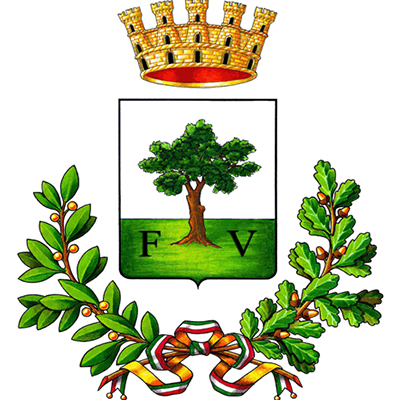
Municipality of Francavilla Fontana
T + 39 0831 820111
Municipal Police
T +39 0831 841014
Tourist Information Point
Via Municipio 4
T +39 0831 811262
iat.francavilla@libero.it
www.comune.francavillafontana.br.it
Highlighted Municipalities


 it
it en
en fr
fr es
es de
de pt
pt